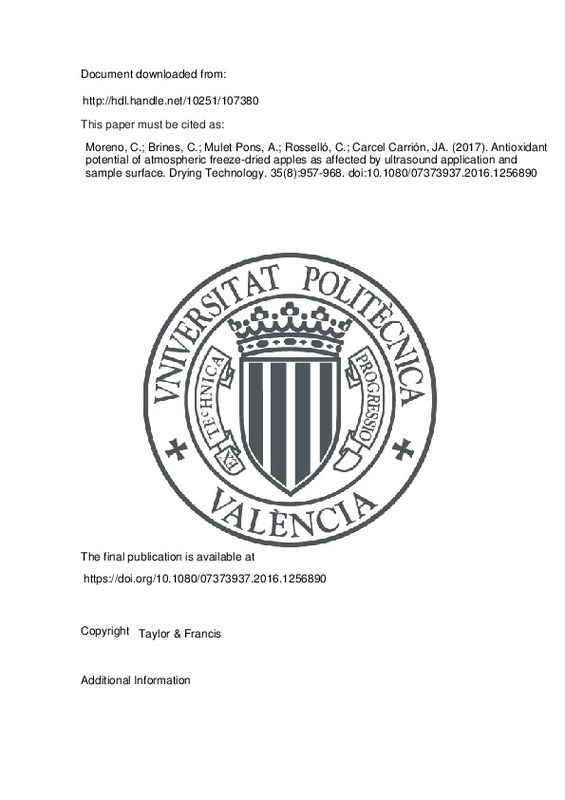JavaScript is disabled for your browser. Some features of this site may not work without it.
Buscar en RiuNet
Listar
Mi cuenta
Estadísticas
Ayuda RiuNet
Admin. UPV
Antioxidant potential of atmospheric freeze-dried apples as affected by ultrasound application and sample surface
Mostrar el registro completo del ítem
Moreno, C.; Brines, C.; Mulet Pons, A.; Rosselló, C.; Cárcel Carrión, JA. (2017). Antioxidant potential of atmospheric freeze-dried apples as affected by ultrasound application and sample surface. Drying Technology. 35(8):957-968. https://doi.org/10.1080/07373937.2016.1256890
Por favor, use este identificador para citar o enlazar este ítem: http://hdl.handle.net/10251/107380
Ficheros en el ítem
Metadatos del ítem
| Título: | Antioxidant potential of atmospheric freeze-dried apples as affected by ultrasound application and sample surface | |
| Autor: | Moreno, C. Brines, C. Rosselló, C. | |
| Entidad UPV: |
|
|
| Fecha difusión: |
|
|
| Resumen: |
[EN] Atmospheric freeze drying (AFD) yields products of a similar quality to the conventional vacuum
freeze-drying technique, but reduces the operating cost. However, it involves very low drying rates.
The sample ...[+]
|
|
| Palabras clave: |
|
|
| Derechos de uso: | Reserva de todos los derechos | |
| Fuente: |
|
|
| DOI: |
|
|
| Editorial: |
|
|
| Versión del editor: | https://doi.org/10.1080/07373937.2016.1256890 | |
| Título del congreso: |
|
|
| Lugar del congreso: |
|
|
| Fecha congreso: |
|
|
| Código del Proyecto: |
|
|
| Agradecimientos: |
|
|
| Tipo: |
|







![[Cerrado]](/themes/UPV/images/candado.png)


